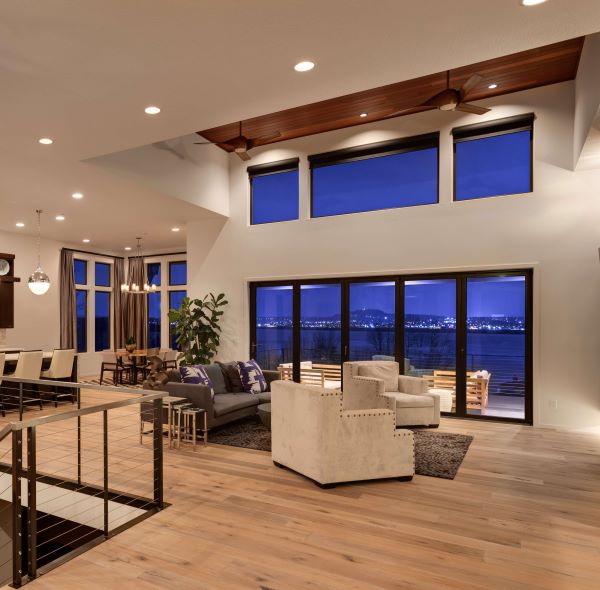Your ceiling lights, commonly referred to as downlights or recessed lighting aren’t just about illumination; they play a significant role in setting the mood and atmosphere of your home. Beyond the basic function of lighting, understanding the concept of color temperature can unlock a world of design possibilities and transform your living space.
What is Color Temperature in Lighting?
It’s important to know a light fixture’s color temperature isn’t related to actual heat but refers to the perceived visual warmth or coolness of light. Your home’s downlight fixtures aren’t just about how bright it is, but also about the color temperature of the light. This temperature, measured in Kelvins (K), affects the mood and color of your rooms drastically.
In the realm of lighting, it’s important to know the established lighting temperatures the industry uses. Understanding this will help you make smart choices when purchasing color changing ceiling lights in the future. And it’s also equally important to know terms like downlight, pot light, and recessed light are all just different ways of saying ceiling lights. Keep this in mind if you ever need to renovate your home lighting.
Commonly Used Color Temperatures in Lighting
Soft White (2700 Kelvin)
Like a warm fireplace or candlelight, this yellow color temperature creates a cozy and inviting atmosphere, ideal for areas of relaxation and comfort like your bedroom.
Warm White (3000K Kelvin)
Offering a balance between the warmth of soft white 2700 Kelvin and neutral white, warm white still appears yellow, but depending on your preferences you may favor this color temp more than soft white.
Neutral White (3500 Kelvin)
Providing a bright and energizing environment, neutral white is perfect for workspaces, where functionality and clarity are prioritized. Neutral white does not have any hints of yellow like warm and soft white do.
Cool White (4000 Kelvin)
Mimicking a cool blue, this color temperature is ideal for tasks requiring good color accuracy and visibility. Although brightness has no relation to color temperature, cool white is often considered to appear brighter than lower Kelvin color temperatures.
Daylight (5000 Kelvin)
Offering a crisp and stimulating cool blue light. It’s often used in warehouses to enhance alertness. While it can be used in modern home designs to create a specific aesthetic, it’s important to consider the potential impact it can have on sleep patterns. This color temperature is almost never used in home décor due to its intensity.
Choosing the Right Color Temperature for Each Room
Living Room & Bedroom
Opt for soft white 2700 Kelvin to create a calming and inviting ambiance that promotes relaxation and unwinding.
Kitchen & Bathroom
Warm white or cool white light provides good task lighting for activities like food preparation and personal grooming, while also maintaining a clean and fresh feel.
Home Office
Use cool white to enhance focus and productivity, also ideal for art studios and craft rooms, where discerning subtle variations in hue is crucial.
Dining Room
Adjust the color temperature depending on the mood you want to set. Warm white can create a cozy and intimate environment for evening meals, while cool white can be invigorating for morning gatherings or casual breakfasts.
Choosing the Right Color-Changing Ceiling Lights
If you looking to customize the color temperatures in your home and don’t already have a color-changing downlights, its highly recommended that you avoid single color light fixtures, consider purchasing a recessed ceiling light that can switch between multiple color temperatures. That way you can always change colors if you choose to do so. You can find color changing recessed lighting online and be sure to check the lighting you get offer multiple color temperature options.
Final Thoughts
By understanding color temperature, you can transform your home into a space that fosters different moods flawlessly. Experiment with different options and discover how the power of light can enhance your everyday living experience. Imagine creating a warm and inviting sanctuary in your bedroom, a bright and functional workspace in your home office. With the right lighting, your home can truly become a reflection of your personality and lifestyle.
Related Posts: